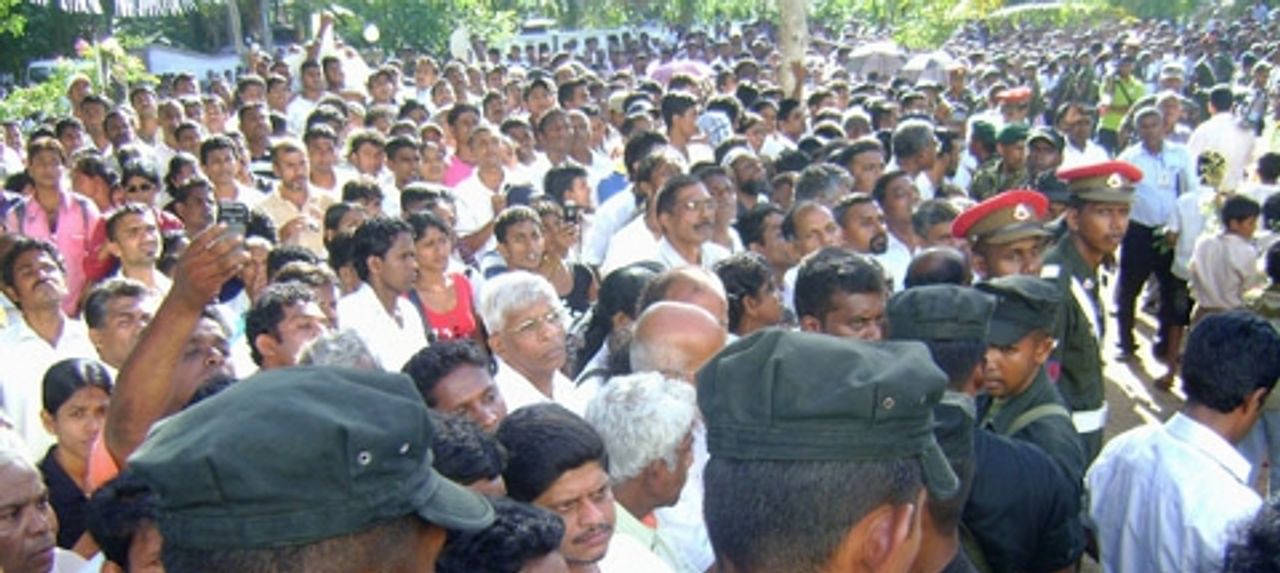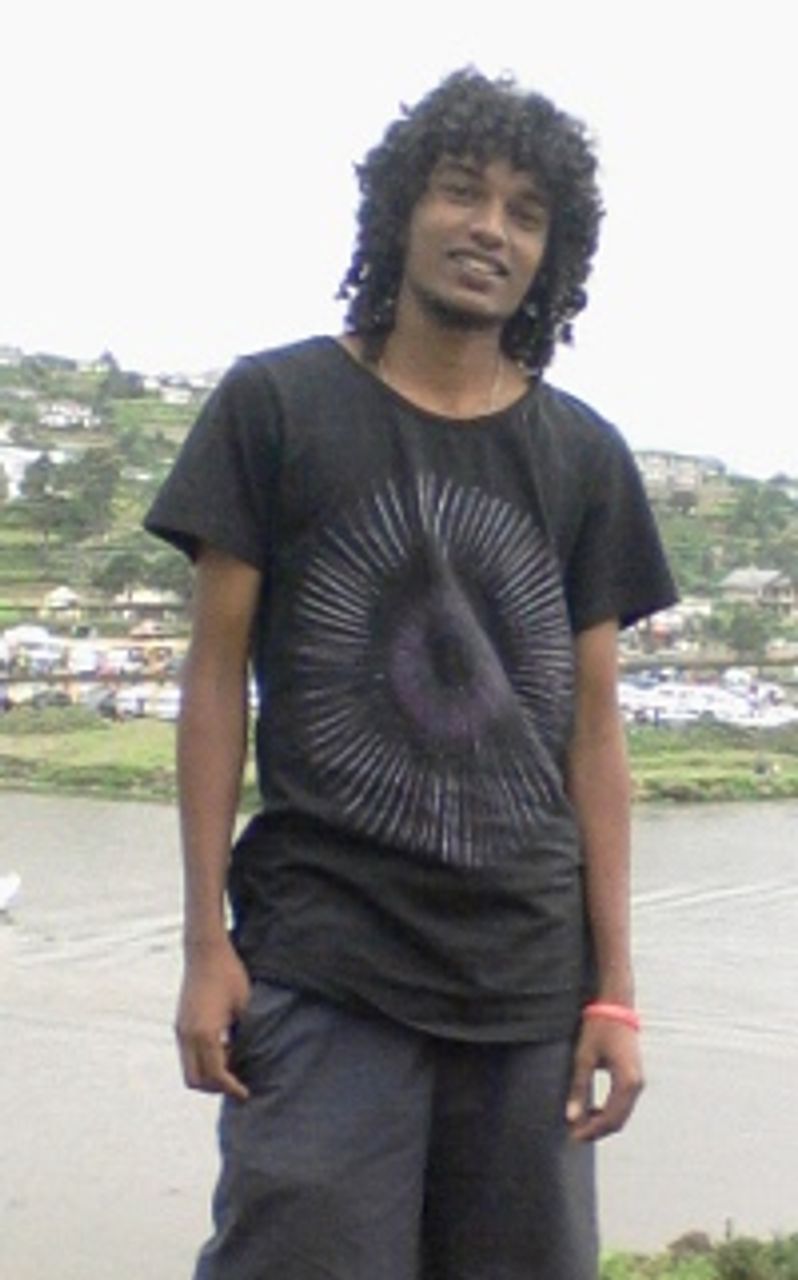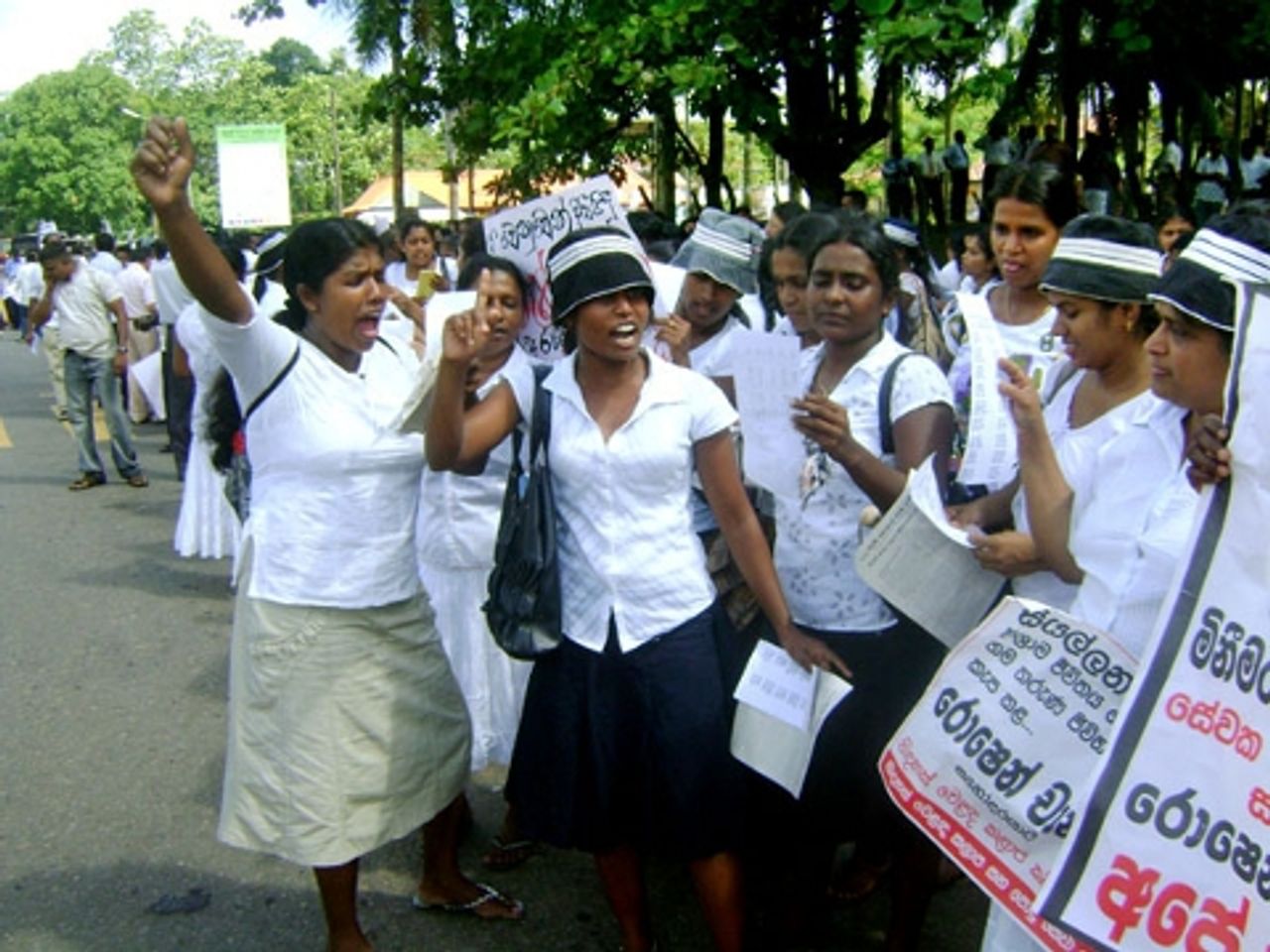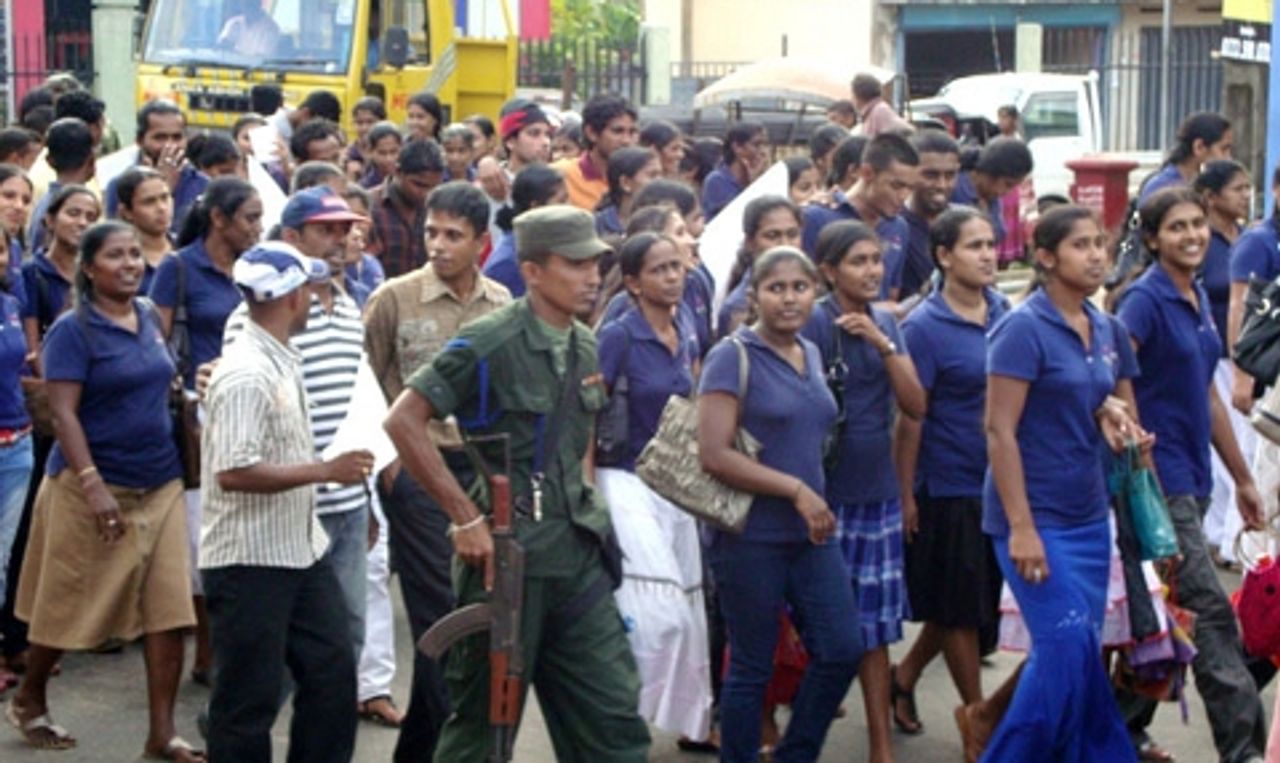The funeral of Roshen Chanaka Ratnasekera, who died of injuries received last week after police attacked protesting workers from the Katunayake Free Trade Zone (FTZ), took place on Saturday in his village.
 A section of the funeral
A section of the funeralDespite a huge deployment of soldiers, around 20,000 people—including many FTZ employees—came throughout the day to pay their respects to the slain worker and as a mark of protest against the government. The funeral took place at the St. Augustine Church in Galoluwa, about 50 kilometres from Colombo.
 Roshen Chanaka Ratnasekera
Roshen Chanaka RatnasekeraRatnasekera, who was just 21, died on June 1, two days after police attempted to suppress a protest by FTZ workers against the government’s planned private sector employees’ pension bill. There is overwhelming opposition to the legislation among workers, who will be compelled to pay into a pension fund, but in many cases will receive nothing in return.
The entire Katunayake FTZ of 40,000 employees came to a standstill last Monday after police assaulted protesting workers in one area of the complex. Police attacked the workers with water cannon, tear gas, wooden and iron poles and at one point fired live rounds. More than 200 people were injured, a number of them seriously.
Ratnasekera suffered a bullet wound to his leg. He was left untreated and bled for two hours in police custody, along with dozens of other injured workers, before being taken to the Ragama Teaching Hospital.
The government of President Mahinda Rajapakse was clearly shocked at the FTZ protests and feared that Ratnasekera’s death would trigger further demonstrations. It suspended the pension legislation, pending talks with opposition parties and the trade unions.
Hundreds of soldiers were deployed in and around Ratnasekera’s home on June 2 after his body was returned to his family. The day before the funeral, a magistrate issued an order barring the removal of the body except to the church. He also banned any speeches, allowing only religious rites and a funeral oration by one of Ratnasekera’s brothers.
On the day of the funeral, the whole village was under what amounted to military occupation. Heavily-armed troops and special commandos were stationed every 10 metres along the 500 metres of road from Ratnasekera’s house to the Galoluwa Roman Catholic church. The church itself was surrounded by security personnel. Soldiers patrolled the area on motor bikes. High-ranking army officers oversaw the operation. Plainclothes military and police intelligence officers were present, as well as pro-government thugs.
At around 9.45 a.m. the army suddenly arrived at Ratnasekera’s home and took his body to the church without the consent of family members. His brother Madushan Ratnasekera explained: “I was having my breakfast. When I was told that the body of my brother was going to be taken away, I could not think what to do.” His sister told the WSWS: “I cannot understand why they took his body so early.”
Villagers were outraged by the incident. One young person said: “It is not an accident that people [in the North] had become terrorists as they were surely subjected to these kinds of things.” He was referring to the military’s treatment of Tamils during the country’s protracted civil war.
Another person explained: “After the death, Prasanna Ranatunga [Chief Minister of Western Province] was hanging around here with his stooges. We thought that some sort of trouble was going to take place. We did not have the opportunity to pay our last respects to Chanaka. The government, military and the church did this collectively.”
Madushan Ratnasekera asked the military not to station armed soldiers near the coffin inside the church, saying that his brother’s colleagues from the FTZ needed to be able to pay their respects without fear. He said he would not take part in the proceedings unless that request was met. The soldiers were moved two hours later.
The FTZ workers who came to the church had to pass through lines of armed soldiers. After the mourners left, they were directed back to the road to prevent them from gathering.
About 5,000 people were present for the funeral service. While circumspect in his remarks, the presiding priest made clear that the situation was extraordinary. “Because of the court order I cannot allow anyone to speak at this funeral except for an appreciation speech by a family member. I can only allow the village friends of Chanaka to carry his remains to the grave,” he said.
Madushan Ratnasekera spoke very briefly, thanking those who had supported his family in holding the funeral. Following the service, Ratnasekera’s coffin was buried in the church cemetery.
 Commandos outside the church
Commandos outside the churchThe heavy military presence at the funeral is a sharp warning of the methods that will be used against further protests by workers. While the trade unions have declared the decision to suspend the pension legislation to be a “victory”, the government is clearly preparing for an offensive against the working class.
Media Centre for National Security director Lakshman Hulugalle told the press on Saturday that the National Intelligence Bureau was gathering information from video, telephone calls and text messages to “identify the organised gangs” active during last week’s clashes between FTZ workers and police.
Ratnasekera’s death and the violent police attack at Katunayake have triggered protests by workers in other free trade zones.
 Workers protesting at Biyagama Free Trade Zone
Workers protesting at Biyagama Free Trade ZoneAbout 1,000 workers took part in a picket on Friday at Biyagama FTZ in one of Colombo’s suburbs. Workers from Ansell Lanka, Agio Tobacco and Telabo Wheel participated. They chanted slogans and displayed handmade placards condemning the killing of Ratnasekera and the police attack on Katunayake FTZ workers.
A worker from Ansell Lanka told the WSWS: “This was a brutal attack. The government cannot go scot-free by putting the blame just on the police. What the government has displayed by this attack is that it will not let workers carry out even peaceful protests for their rights.”
He recalled that the police had previously attacked a peaceful demonstration by Ansell Lanka workers in 1994. One worker, Premaratne, died of injuries inflicted by police bullets.
“We don’t believe the government announcement withdrawing the pension bill,” he said. “They will bring it back later. It is acting according to IMF [International Monetary Fund] orders. We will fight until we defeat this bill.” He criticised the unions for dividing workers. “All the workers must unite under one banner against the government attacks and defend our rights,” he said.
Friday’s protest was organised by the Free Trade Zone and General Services Workers Union (FTZGSWU). Union leader Anton Marcus said: “We will fight until we defeat this act. To create normal conditions, the government should agree not to punish workers who protested, grant full pay without deductions for strike days, punish those who attacked workers and provide compensation to injured workers and Ratnasekera’s family.”
Far from fighting to defeat the pension scheme, the unions had called off protests against the legislation and are now scrambling to bring under control the movement of workers that erupted in defiance of their instructions. Marcus and his union are appealing to the government for negotiations that will pave the way for a sell-out deal to reintroduce the legislation with minor modifications.
 Workers marching in Ja-Ela
Workers marching in Ja-ElaLast Friday also, about 5,000 workers from the Ekala industrial estate in Ja-Ela demonstrated against police violence and the killing of Ratnasekera. They included young workers, mainly female, from the Politex, Polimate, John Keels, Singer, Elfish and Loadstar Tire companies. Despite warnings from army officers, they marched from the industrial estate to Ja-Ela town and chanted slogans in front of the local police station.
Subscribe to the IWA-RFC Newsletter
Get email updates on workers’ struggles and a global perspective from the International Workers Alliance of Rank-and-File Committees.
